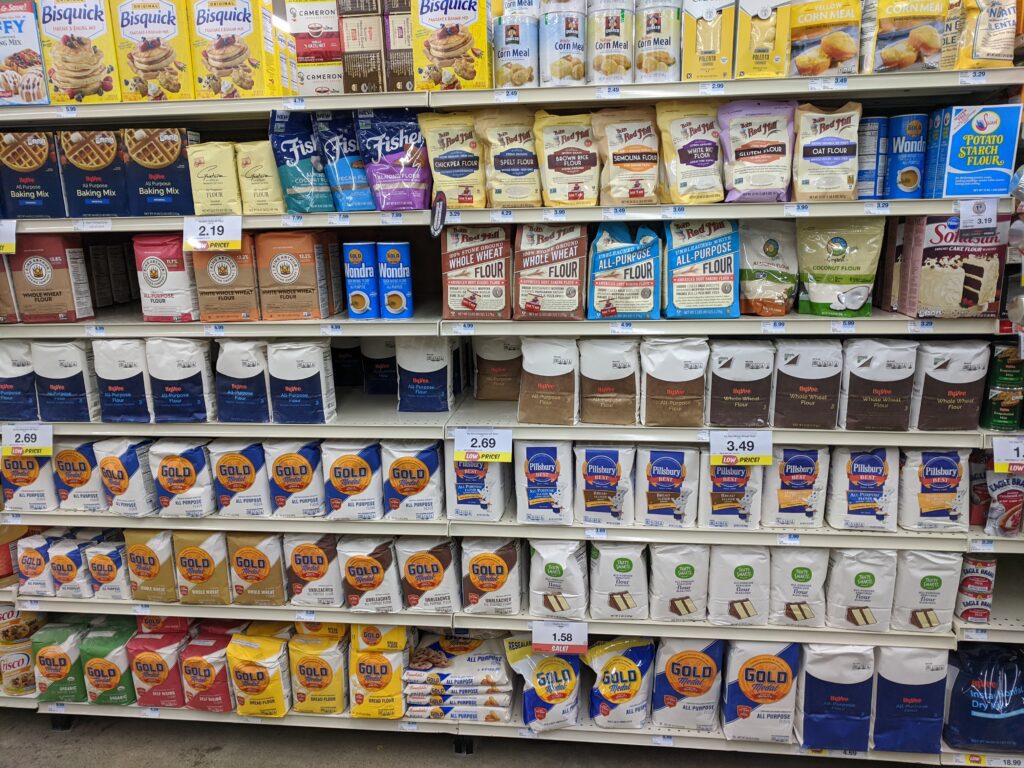Gluten can cause health issues for some people, making traditional wheat flour a challenge for baking. However, there are several gluten-free flour alternatives that can be used instead. These flours lack the proteins necessary for structure and require additional ingredients to achieve the same texture, rise, and structure necessary for baking. Some popular gluten-free flour alternatives include almond flour, coconut flour, rice flour, and oat flour. A pre-made gluten-free flour blend is also available to ensure a perfect balance of different gluten-free flours. These flour alternatives offer unique flavors and nutritional benefits and enable everyone to enjoy their favorite baked treats.
Gluten-Free Flour Alternatives for Baking Success
Introduction
Baking can present a challenge for individuals who need to avoid gluten. Traditional wheat flour is a staple ingredient in most baked goods, and it contains gluten, which can cause health issues for some people. However, with the rise of gluten-free diets, there are now several gluten-free flour alternatives for baking success.
Understanding Gluten-Free Flours
Before we delve into the different types of gluten-free flours, it’s essential to understand the properties of conventional wheat flour. Wheat flour contains two main proteins, glutenin and gliadin, which combine to form gluten. Gluten is responsible for the elasticity and structure of traditional baked goods like bread, cakes, and cookies.
Self-raising flour contains a leavening agent such as baking powder, while all-purpose flour is pure wheat flour. Gluten-free flours, on the other hand, lack these proteins and require additional ingredients to achieve the same texture, rise, and structure necessary for baking.
Gluten-Free Flour Alternatives
Below are some popular gluten-free flour alternatives that can be used in baking:
Almond Flour
Almond flour is a popular gluten-free alternative that is rich in nutrients and antioxidants. This nutty tasting flour is a good source of protein, healthy fats, and fiber, making it a healthier choice for baking. It’s often used in baking cakes, cookies, and bread as it provides a moist and tender crumb.
Coconut Flour
Coconut flour is another gluten-free flour alternative that is low in carbohydrates and high in fiber. Due to its absorbent nature, it’s essential to use a small amount of coconut flour in baked goods to achieve optimal results. This flour imparts a slightly sweet and nutty taste and is commonly used in baking keto and Paleo-friendly desserts.
Rice Flour
Rice flour is made by grinding rice grains into a fine powder. It’s a versatile flour that can be used in baking bread, cakes, and cookies. Rice flour is gluten-free and has a neutral flavor, making it ideal for savory and sweet dishes. Different types of rice flour include brown, white, and sweet rice flour. Brown rice flour is more nutritious due to its bran content, while white rice flour has a finer texture.
Oat Flour
Oat flour is made from ground oats, and it has a tender and crumbly texture. It’s an excellent source of fiber and healthier than refined wheat flour. To use oat flour in baking, it’s best to grind oats to create a fine powder. Oat flour works well in cookies, biscuits, and bread, and it’s often mixed with other gluten-free flours like rice flour or potato starch.
Gluten-Free Flour Blend
While gluten-free flours are excellent alternatives for wheat flour, they often lack the same structure and rise. To achieve similar results, it’s advisable to use a gluten-free flour blend. A pre-made blend ensures that you have a perfect balance of different gluten-free flours, so you don’t have to measure and mix them yourself.
Here’s a simple gluten-free flour blend recipe that you can use:
- 1 cup rice flour
- 1/2 cup potato starch
- 1/4 cup tapioca flour
- 1/4 cup cornstarch
Combine all the ingredients and mix thoroughly, then store in an airtight container.
Conclusion
Using gluten-free flour alternatives is an excellent way to make baking accessible for individuals with gluten intolerances. The different flour options offer unique flavors and nutritional benefits and, when combined with the right proportions, produce delicious and healthy baked goods. Whether using one type of flour or a blend, these gluten-free options allow everyone to enjoy their favorite baked treats.
